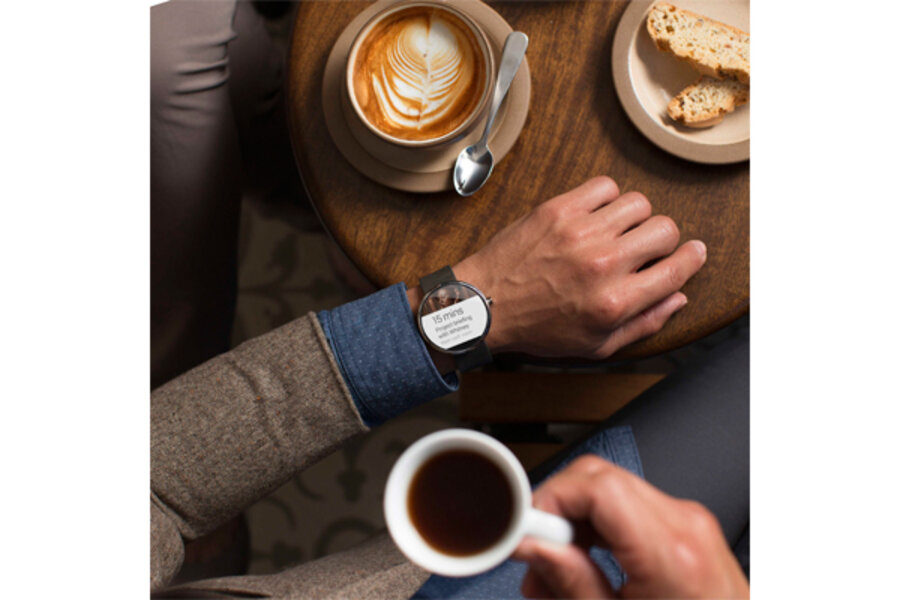Android Wear: Google's take on smart watches
Loading...
Google is looking beyond Glass when it comes to wearable technology.
The tech company announced the release of Android Wear, smart watch specific software for Android devices. Though it won’t be available on devices until two new smart watches are released this summer, it does indicate that major tech companies are still betting their money on the success of wearable devices. Whether the new OS and designs will launch this product outside the futurist bubble of Silicon Valley is yet to be seen.
The Android Wear release video shows a Googletopia of good-looking people in warm climates whose lives are made easier by a connected smart watch on their wrist. A bicyclist says “Ok Google: Open garage door” as she and two friends pedal up to their opening garage door. A surfer receives a jellyfish warning just as she and her pals are unloading their boards. “Let’s go to Zuma [beach instead],” she says. As a friend tries (and fails to hail a cab by hand) a man requests a ride and confirms a cab on his watch. A woman runs to catch a plane, and as she gets to the ticketing counter the watch lets her know she has burned 53 calories. She smiles and swipes to a QR code that functions as her plane ticket.
The tagline? “Information that moves you.”
“Most of us are rarely without our smart phones in hand,” writes Sundar Pichai, senior vice president of Android, Chrome, and apps at Google in a blog post. “These powerful supercomputers keep us connected to the world and the people we love. But we're only at the beginning; we’ve barely scratched the surface of what’s possible with mobile technology. That’s why we’re so excited about wearables—they understand the context of the world around you, and you can interact with them simply and efficiently, with just a glance or a spoken word.”
Android Wear will be available on the Motorola Moto 360 smart watch and LG G Watch, both set to be released this summer, and were demoed in the video. Both have a noticeably different design than most smart watches in the past. Gone are the chrome shells and hardware details: Motorola and LG clearly had fashion in mind. The faces are either round, or have soft edges, with various strap options. If you didn’t see the smart screen, you would probably think it was a normal watch.
No pricing information is available yet.
Speaking of the screen, Google also released the Android Wear developers’ preview, which hints at what could come on the new OS once it hits wrists. Users will be able to check weather, meetings, travel time, receive messages, send messages via Google voice, access Google search, and check headlines and sports scores. That’s just what Google has developed: the developer preview offers the code necessary to update apps to the smart watch OS. There will no doubt be a lot of innovation on this front in coming months.
This move puts Google ahead of Apple in the smart watch game. Apple has long been rumored to be developing a smart watch, and has previously hinted it may delve into a new product line later this year.
Though Google has a step on Apple, it has had mixed success with wearables so far, even on its home turf of tech forward San Francisco Bay Area. Google Glass Explorers have faced issues ranging from traffic tickets to suspected film piracy to getting kicked out of bars for wearing the device.
Forecasters, however, haven’t given up on wearable tech. Smart watch shipments will reach 90 million in 2019 according to market-research firm ABI Research, up from 7.5 million this year.






